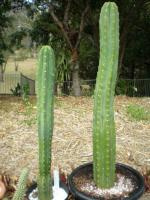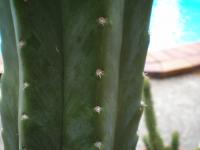I have two Trichocereus at home. One from SAB and one from bunnings. I have been looking at the spines closely and have noticed some difference. I was hoping someone could help me out with an accurate identification please.
These are the two in question. The one on the right is bunnings, one the left SAB's
This is the SAB Trich, Redish sort spines and quite a bit longer than the bunnings one
And this is the bunnings job, White spines, very short.
Anyone got some suggestions?
Thank you EDIT- Sorry i should have been a bit clearer in my question. Yes, they are both T.pachanoi, i was just wondering why one has different spines that the other. Different locations? Age?
Hi all,
I have two Trichocereus at home. One from SAB and one from bunnings. I have been looking at the spines closely and have noticed some difference. I was hoping someone could help me out with an accurate identification please.
These are the two in question. The one on the right is bunnings, one the left SAB's
Anyone got some suggestions?
Thank you EDIT- Sorry i should have been a bit clearer in my question. Yes, they are both T.pachanoi, i was just wondering why one has different spines that the other. Different locations? Age?
EDIT- Sorry i should have been a bit clearer in my question. Yes, they are both T.pachanoi, i was just wondering why one has different spines that the other. Different locations? Age?

Edited by GollumShare this post
Link to post
Share on other sites